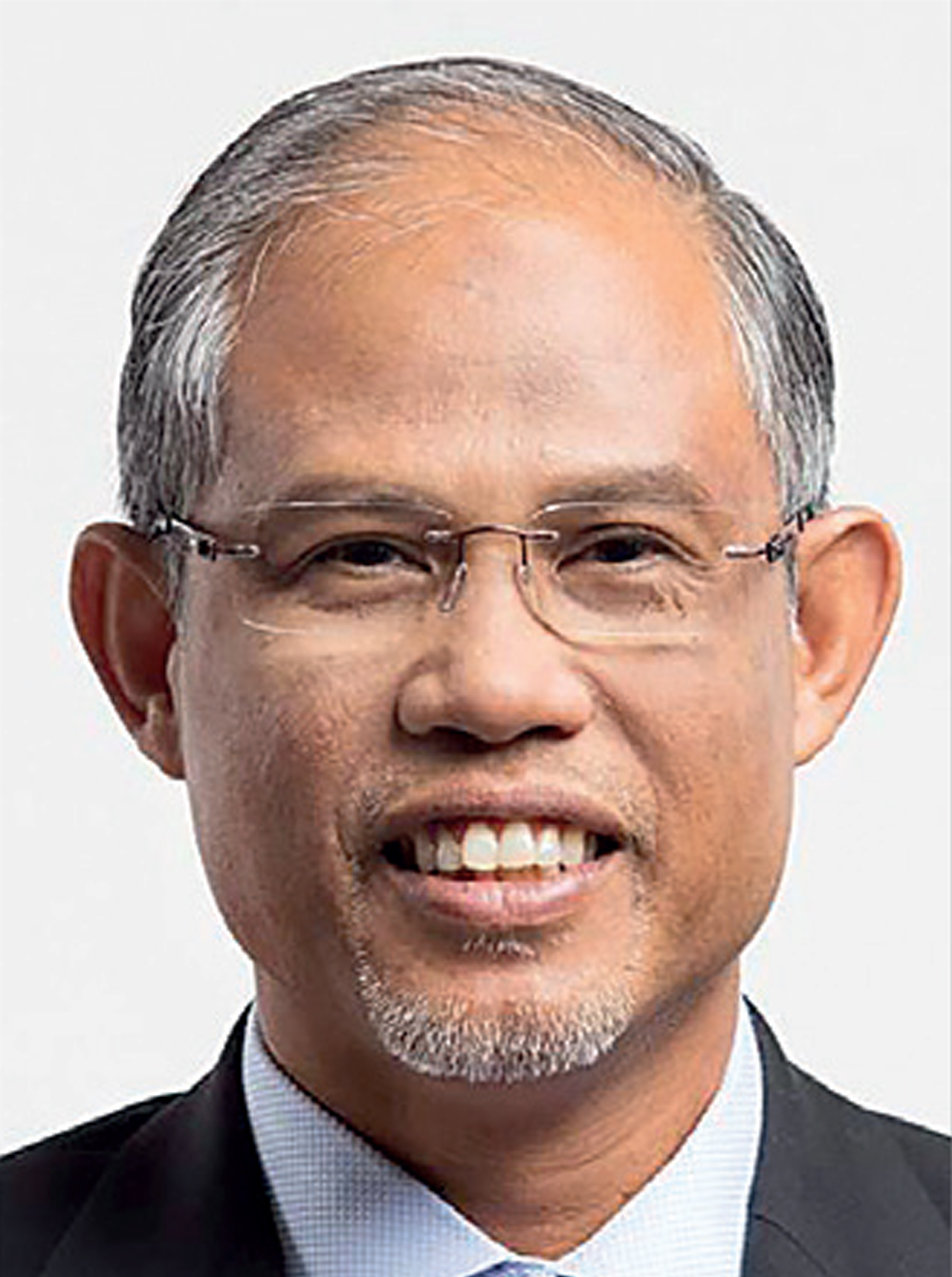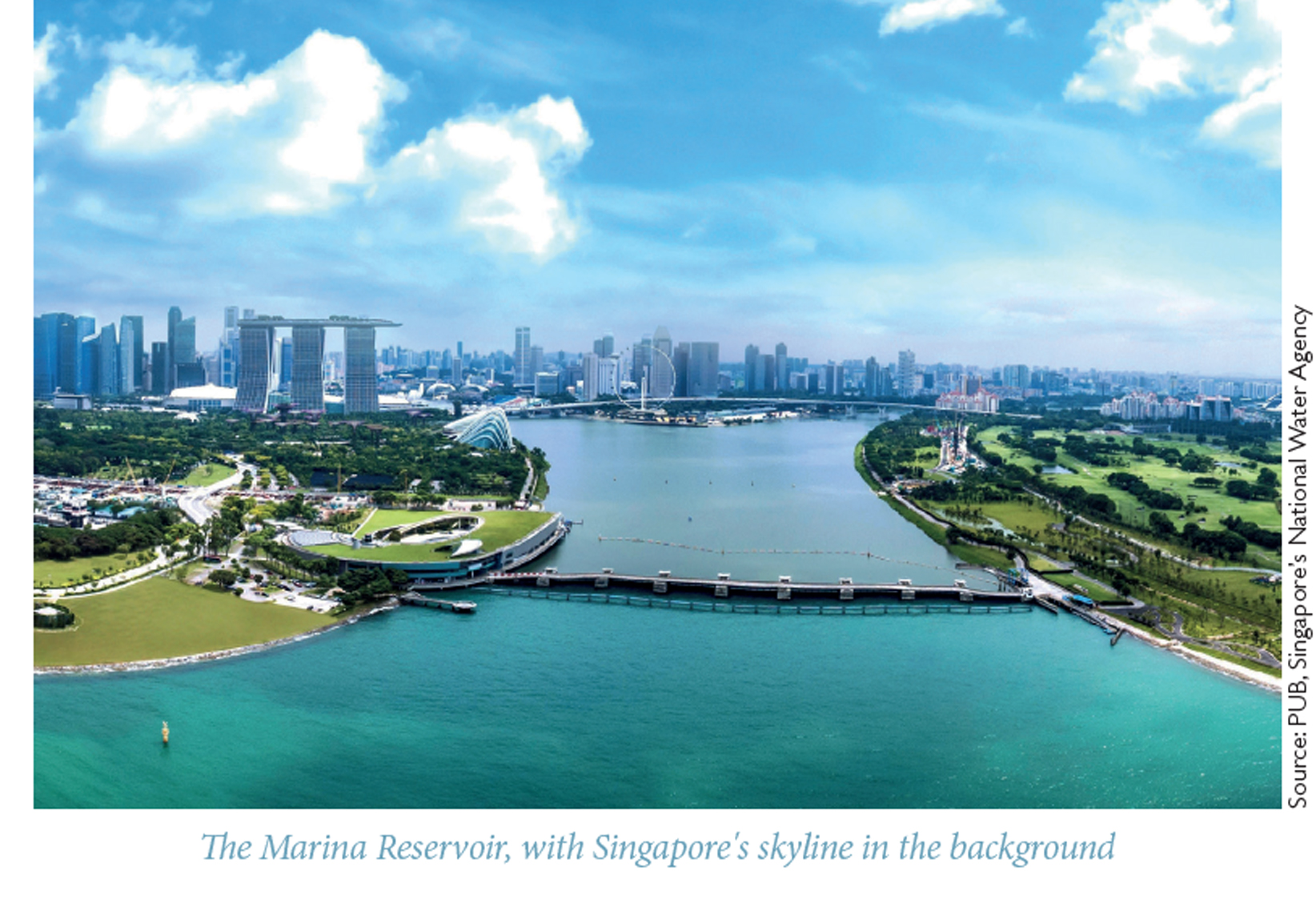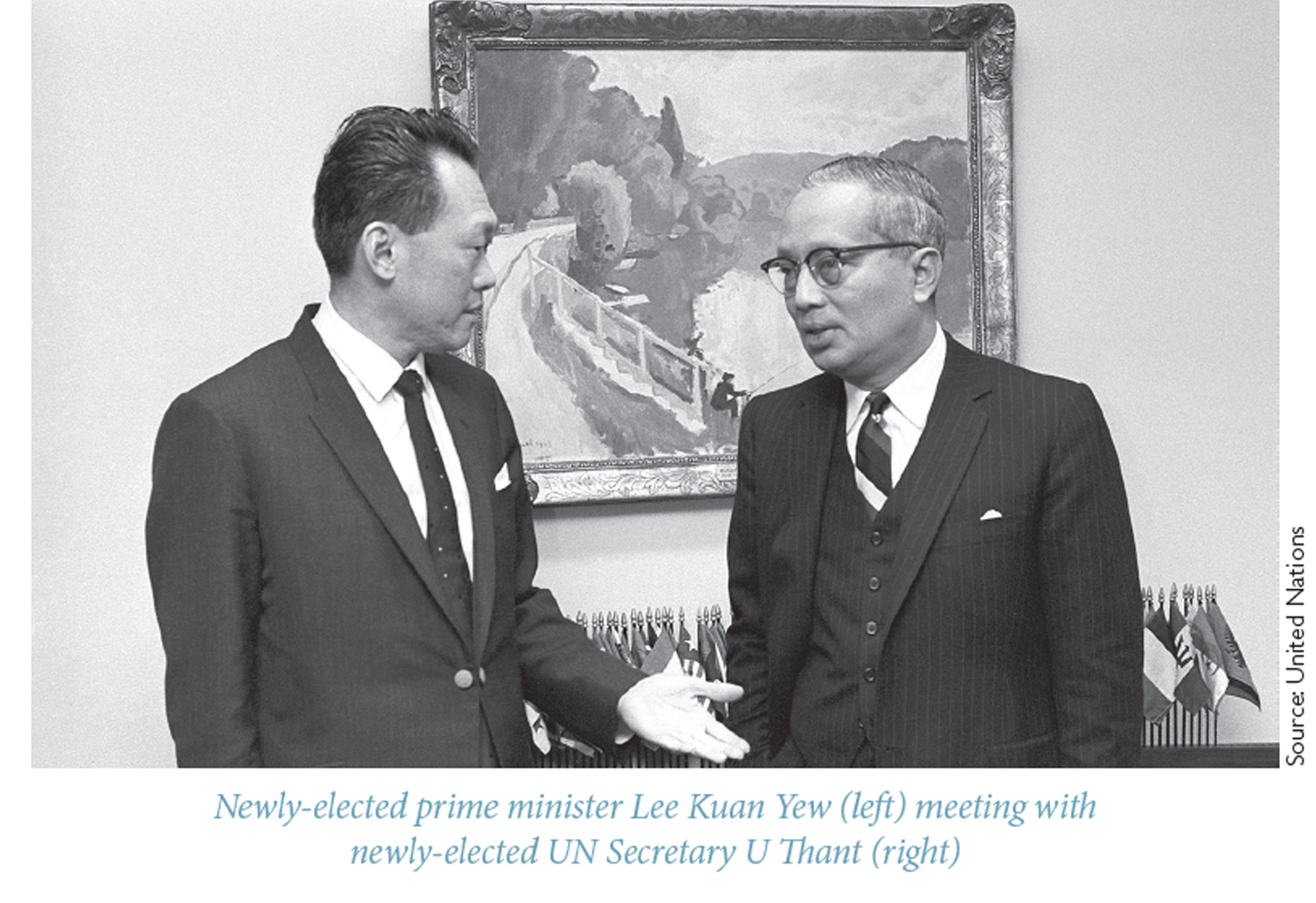 Masagos Zulkifli is Minister for the Environment and Water Resources and Minister-in-Charge of Muslim Affairs of Singapore. He has held various positions within Singapore’s ministries of education, foreign affairs, and home affairs. You may follow him on Twitter @MasagosZ.
Masagos Zulkifli is Minister for the Environment and Water Resources and Minister-in-Charge of Muslim Affairs of Singapore. He has held various positions within Singapore’s ministries of education, foreign affairs, and home affairs. You may follow him on Twitter @MasagosZ.
Singapore has come a long way on its journey towards sustainability. Over 50 years ago, Singapore was dirty and polluted, lacking proper sanitation and facing high unemployment. It was a small developing island city-state with no natural resources, and faced an uncertain future after its unexpected separation from Malaysia. Many were skeptical that Singapore could even survive on its own.
Despite these grim conditions and inauspicious beginnings, Singapore’s pioneering team of leaders had tremendous foresight, and believed that economic development should not be pursued at the expense of the environment or social inclusion. With this vision, strong political leadership and immense efforts by our people, Singapore was transformed from mudflats into a clean and green modern metropolis.
Today, Singapore is a liveable and sustainable city, with clean air and a clean living environment, a robust and diversified supply of water, and beautiful green spaces. Singapore is ranked as the most sustainable city in Asia, and fourth in the world, according to the 2018 Sustainable Cities Index. We are also ranked second according to the World Economic Forum’s 2018 Global Competitiveness Report. This demonstrates that sustainability and economic competitiveness are not mutually exclusive.
Sustainable development has been the cornerstone of Singapore’s continued progress. In pursuing economic development, we have been careful not to sacrifice the quality of our environment. Singapore is today widely recognized as a “City in a Garden,” with nearly 50 percent green cover and 72 hectares of rooftop gardens and green walls. Singapore is among the 20 most carbon-efficient countries, while natural gas generates 95 percent of its electricity.
Singapore’s approach to sustainable development is guided by three key principles: (i) an integrated approach and long-term strategic planning; (ii) investments in R&D and innovative solutions; and (iii) forging partnerships.

Our Water Story
First, we pursue a long-term, integrated approach to policy planning and implementation. This is best exemplified by the Singapore Water Story, which is a major milestone in Singapore’s sustainability journey.
In the 1960s, Singapore experienced frequent water shortages due to prolonged dry spells, and had to carry out water rationing. One of the longest water rationing periods lasted for over ten months. Today, we continue to be one of the world’s most water-stressed countries. Singapore topped the list of 167 nations likely to face extremely high water stress in 2040, according to a 2015 report by the World Resources Institute.
Singapore’s founding prime minister, the late Lee Kuan Yew, recognized that water security was key to the nation’s survival. Lee famously declared that “every other policy has to bend at the knees for our water survival.” In 1971, soon after independence, Lee set up the Water Planning Unit; and in 1972 this unit developed Singapore’s first Water Master Plan to enhance our water security.
Soon after, in 1977, Lee challenged Singapore’s national water agency, PUB, to find ways to enhance Singapore’s water security and “to capture every drop of rain” that fell on the island. In the decades that followed, the country’s water planners and engineers worked tirelessly to build a comprehensive sewage system, which served the entire country by preventing the contamination of waterways, cleaning up polluted waterways to harvest storm water for consumption, and progressively increasing the country’s catchment areas.
The mammoth task of transforming our polluted waterways into reliable sources of water for consumption is best represented by the clean-up operations of the Singapore River, which was literally an open sewer in the 1970s. This went beyond simply removing over 250 tons of waste that had accumulated in the river and along its banks. Thousands of street hawkers and squatters were relocated and rehoused in street trader centers and public housing. Pollutive industries, such as pig farms and shipyards, were also relocated. Through hard work and determination, and at a then cost of $170 million, the clean-up of Singapore River was completed in 1987, with the river’s water being clean enough for fish to thrive.
Apart from efforts to increase our water catchment area, which today covers two-thirds of the island, Singapore also invested in R&D and technology to develop weather-resilient sources of water, namely high-grade reclaimed water known as NEWater and Desalinated Water. These would augment Singapore’s water supply and enhance our water security. Along with the water from Local Catchments and Imported Water, they make up our “Four National Taps” to meet our local water demand. Despite the good progress made, PUB is still investing in research to meet future challenges. For example, PUB is actively looking into electro-deionization technology and biomimicry, which could potentially halve the energy required in desalination. In the process, Singapore also became home to a thriving ecosystem of more than 100 companies that provide solutions for various water challenges in the region.
To realize the full potential of our water catchment infrastructure, we launched the Active, Beautiful, Clean (ABC) Waters Programme in 2006, in order to transform utilitarian drains into attractive waterways, bring people closer to water, and improve runoff quality using green cleansing features. Our waters have become a part of home that Singaporeans enjoy and cherish. With clean waterways teeming with fish, wild animals like smooth-coated otters have returned after decades of being absent from Singapore, and are flourishing in our urban spaces.
The Singapore Water Story is testament to how a country can, with visionary leadership, careful long-term planning and effective implementation, turn constraints into a strategic advantage.
Innovative R&D
Second, we believe in, and invest heavily in, R&D and innovative solutions. The Singapore Water Story showed the importance of how investing in R&D can unlock transformative solutions to overcome resource constraints and achieve a sustainable future. Having successfully closed the water loop, we are turning our attention to other areas where we can leverage on technology and innovative solutions to overcome our constraints. The food sector is a key example.
As a city state that imports more than 90 percent of its food, Singapore is exposed to global price and supply fluctuations, as well as possible food supply disruptions, due to climate change and disease outbreaks. We are pursuing three broad strategies to bolster our food security—diversify our import sources, grow local, and grow overseas. Singapore’s “30-30” vision is to produce 30 percent of the country’s nutritional needs locally by 2030.
However, resources vital to food production, such as water and energy, will be increasingly scarce. We must make efficient use of these scarce resources on the limited land we have in Singapore.
In order to transform our agriculture sector into one that is high-tech, innovative, sustainable and resilient against climate change, Singapore has been leveraging science and technological innovations to grow more with less. For example, the Singapore Food Agency has been tendering out land to farms that innovate and adopt technology to raise production sustainably.
We have also been helping local farmers to adopt novel approaches to food production, such as vertical indoor farming and the use of smart technologies. These approaches reduce reliance on manpower, increase resource efficiency and decrease vulnerability to environmental risks. We have set aside $144 million for R&D projects in sustainable food production, future foods, as well as food safety science and innovation. Through such grants, the government aims to work with the private sector and other stakeholders to innovate and co-create solutions for more sustainable food production through circular economy approaches.
For example, N&N Agriculture, one of Singapore’s egg farms, has adopted technologies to convert waste into green energy. It uses an anaerobic digester to produce biogas, which reduces carbon emissions compared to burning fossil fuels. The solid by-product of anaerobic digestion is then used as compost for growing vegetables. As such, the farm generates no manure waste. Another example is Sustenir, an indoor vegetable farm, which re-channels carbon dioxide, a by-product of our petrochemical industry, to enhance vegetable yields.

Forging Partnerships
Third, Singapore’s policy formulation and implementation is underpinned by collaborative multi-stakeholder partnerships. Governments cannot effectively address climate change and sustainability alone. Last year Singapore declared 2018 as the Year of Climate Action, to increase awareness and encourage collective climate action. During the year, more than 340,000 climate action pledges were made, and over 800 climate action-related events organized by our People, Public, Private (3P) sectors. These community efforts were testament to a growing national awareness regarding environmental sustainability.
International partnerships are also key to sustainable development. No one country can address the new and pressing challenges alone. Unfortunately, the resurgence of isolationism, protectionism, and xenophobia is straining the multilateral system. Singapore believes that the United Nations, as the only universal, inclusive, and multilateral forum, is best placed to manage and deal with the global commons, such as climate change, transboundary pollution, and environmental degradation.
In this spirit, Singapore has been hosting the World Cities Summit, Singapore International Water Week and Clean-Enviro Summit Singapore for a decade, in an effort to share and co-create solutions for urban
sustainability. The most recent edition was held in 2018, attracting 24,000 attendees from 110 countries.
Singapore has also been sharing its sustainable development experience with fellow developing countries through the Singapore Cooperation Program. Since 1992, we have trained over 120,000 officials around the world. Apart from regular programs on the environment, waste, water, food, transport and housing, we recently also introduced a Climate Action Package designed to help countries in the region strengthen their capacity to mitigate and adapt to climate change.
Circular Economy
There are, however, many pressing global challenges that can undermine our sustainable development efforts. Our current consumption and production trajectory is unsustainable. Our planet’s resources are finite. We risk ecological catastrophe if we do not change our consumption and production patterns.
To grow sustainably in a resource and carbon constrained world, we need a paradigm shift in our production and consumption patterns. Singapore is doing its part to address a resource-constrained future, and the challenges posed by climate change. Singapore has this year implemented an economy-wide carbon tax to incentivize the shift towards a low-carbon economy. We have also designated 2019 as our Year Towards Zero Waste, to move towards adopting a circular economy approach to resource management. This means moving from a linear ‘take-make-throw’ model to one that reuses and recycles our resources for as long as possible.
We also need to integrate our systems. To maximize our resources and reduce our carbon footprint, we can no longer afford to operate in silos. Instead, we must think, plan and implement holistically to find new synergies across different sectors, such as waste, water, energy and food.
Singapore has operated incineration plants and water reclamation plants independently for over 30 years. We are now seeking to realize synergies by co-locating these plants. When it opens in 2025, the Tuas Nexus plant will be the world’s first facility to co-digest wastewater sludge and food waste into biogas, which will help power the plant’s operations. The integration of processes at Tuas Nexus will harness synergies via the water-energy-waste nexus, and save more than 200,000 tons of carbon emissions annually—equivalent to taking 42,500 cars off the road. We achieve better outcomes by planning at the systems level.
A circular economy should be pursued not just nationally, but also regionally and globally. We should work collectively toward a vision of a global circular economy, where clean and valuable recycled fractions can move freely across countries to support economic activity, utilize resources more efficiently, and ultimately protect the environment and preserve the world’s resources.
Voluntary National Review
Singapore presented last year its first Voluntary National Review (VNR) on the implementation of the Sustainable Development Goals (SDGs) at the United Nations High-Level Political Forum, in order to share best practices and learn from others. The 2030 Agenda for Sustainable Development is a framework to benchmark government policies.
The 17 SDGs are integrated into the Singapore Government’s long-term agenda. We also used the VNR process to increase public engagement and awareness of the 2030 Agenda, and mobilized more than 30 ministries
and agencies to prepare for our VNR. Our 2018 VNR report features the areas in which we have made progress in the implementation of the 17 SDGs, as well as highlighting the potential challenges and opportunities that we face as a country.
Sustainable development means providing for the needs of the current generation without compromising on the interests of our children and grandchildren. As the Chinese proverb says, “one generation plants the trees and the next generation enjoys the shade.” Beyond harvesting for ourselves, we must plant seeds and grow trees for others. We must take action and build a sustainable and resilient future for generations to come. We must make the right development choices today. This is our individual and collective responsibility.







